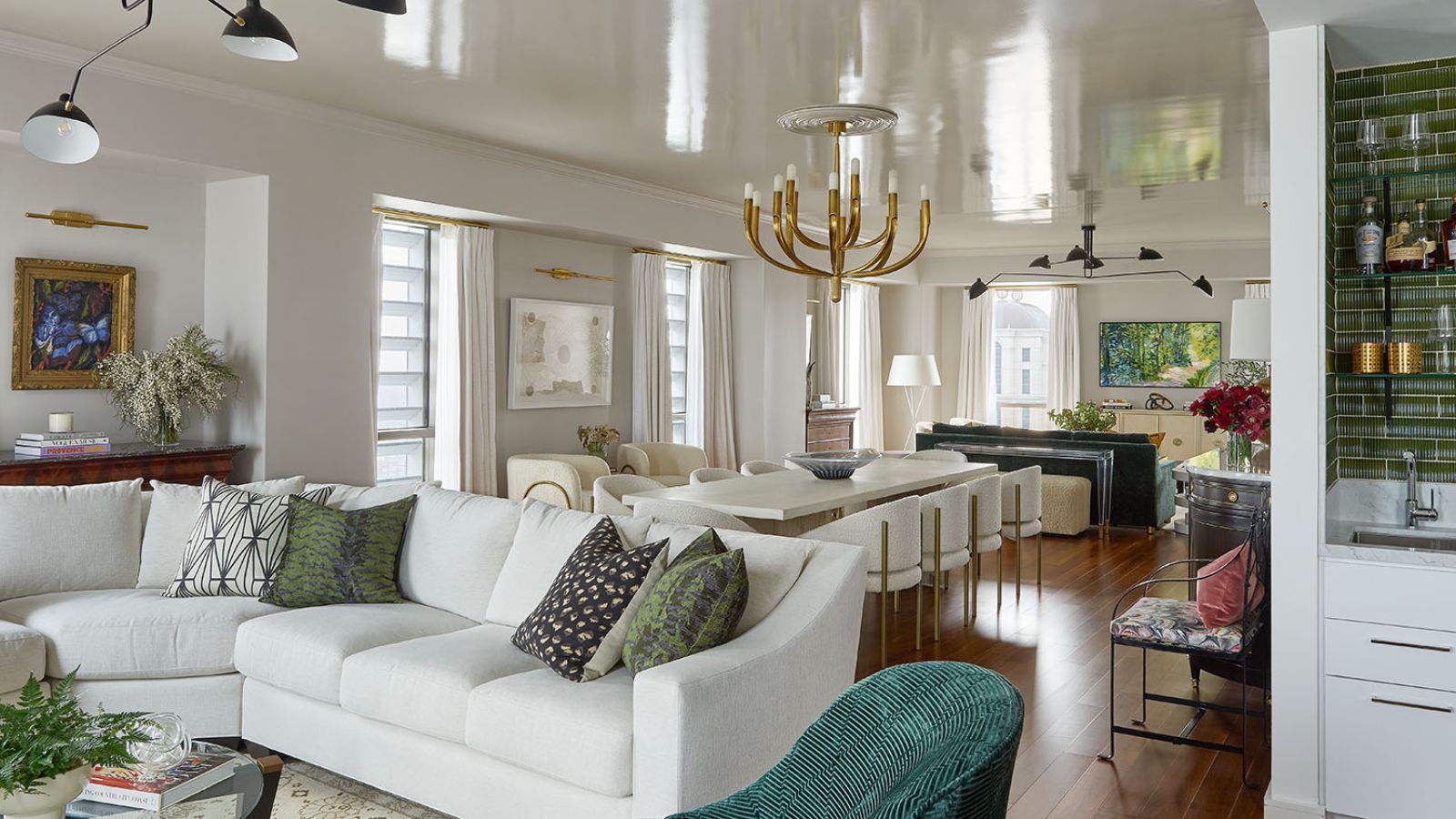
If your home contains open-plan spaces or dual-purpose rooms, getting in the know about zoning is a must. Zoning is a technique interior designers use to create functional areas within parts of the home so they work for each task that’s undertaken and look good, too.
When rooms are single function – think only cooking, dining, working, and so on – zoning isn’t something that’s important. But in today’s open plan layouts where walls and doors don’t divide the areas for different activities, knowing how to distinguish them is essential. And even spaces such as bedrooms can be dual-use with clever zoning techniques.
Here, interior design professionals share their secrets on zoning rooms so they preserve the open and spacious feel but function beautifully for all the tasks that take place in that part of the home.
The lowdown on zoning
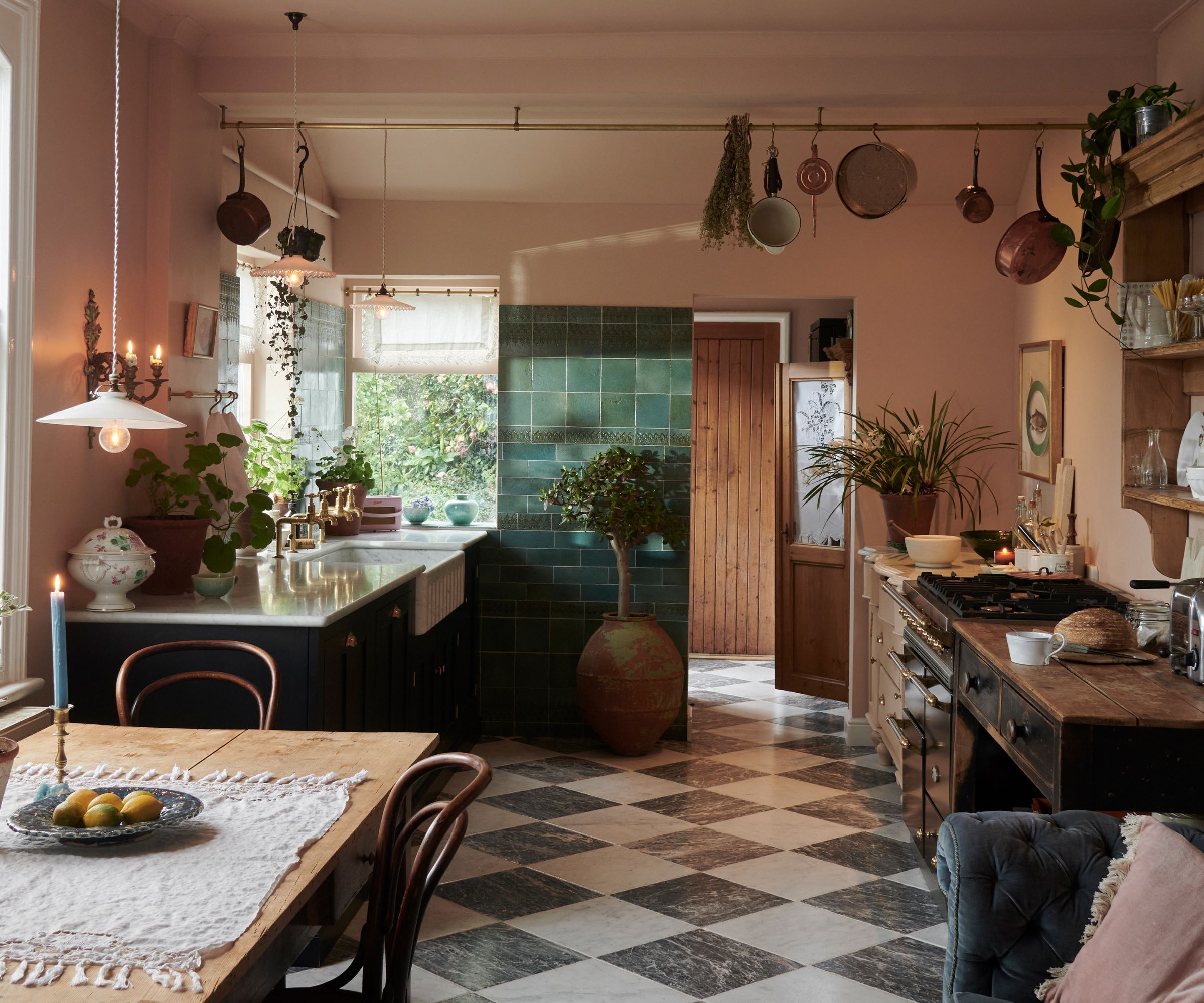
Zoning is important for open-concept layouts and for single rooms. In open-concept layouts, zoning can make each of the areas within them distinct. In individual rooms, it can make them comfortable for different activities. Follow the lead of interior design experts to zone successfully in either type of space.
Why zone open-plan layouts?
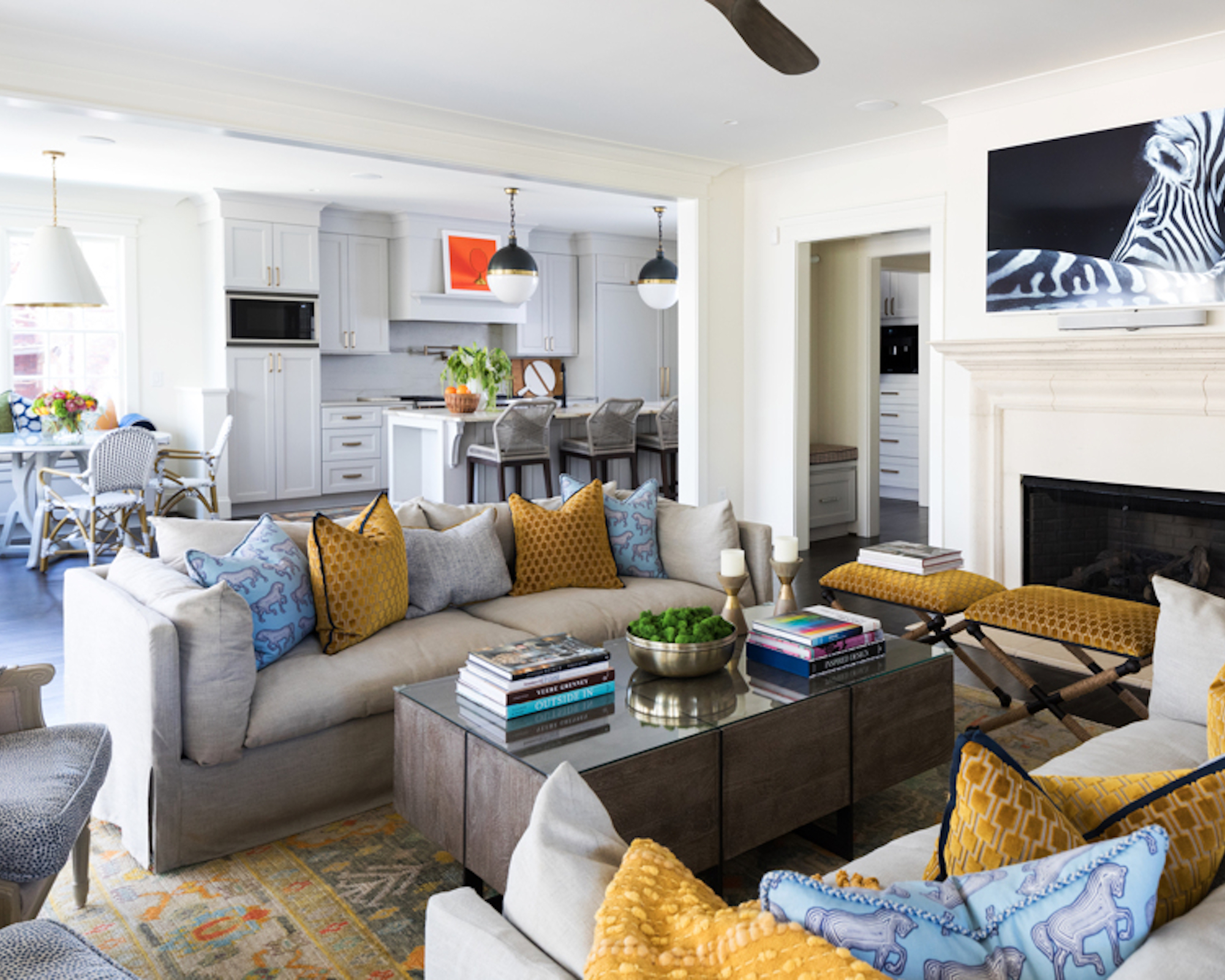
It might seem counterintuitive to zone an open-concept layout: surely what’s essential is that it is open? But there are good reasons to do so. ‘Zoning is the secret ingredient to mastering open-concept layouts,’ explains interior designer Hope Austin of Hope Austin Interiors. ‘While these spaces are known for their expansive nature, zoning adds human scale, intimacy, and purpose.’
A host of different activities take place in an open-concept space. ‘Zoning guides flow and function, integrating activities in a cohesive yet distinct manner,’ explains interior designer Artem Kropovinsky. ‘It enhances both aesthetic appeal and usability, making spaces adaptable to changing needs.’
Why zone single rooms?
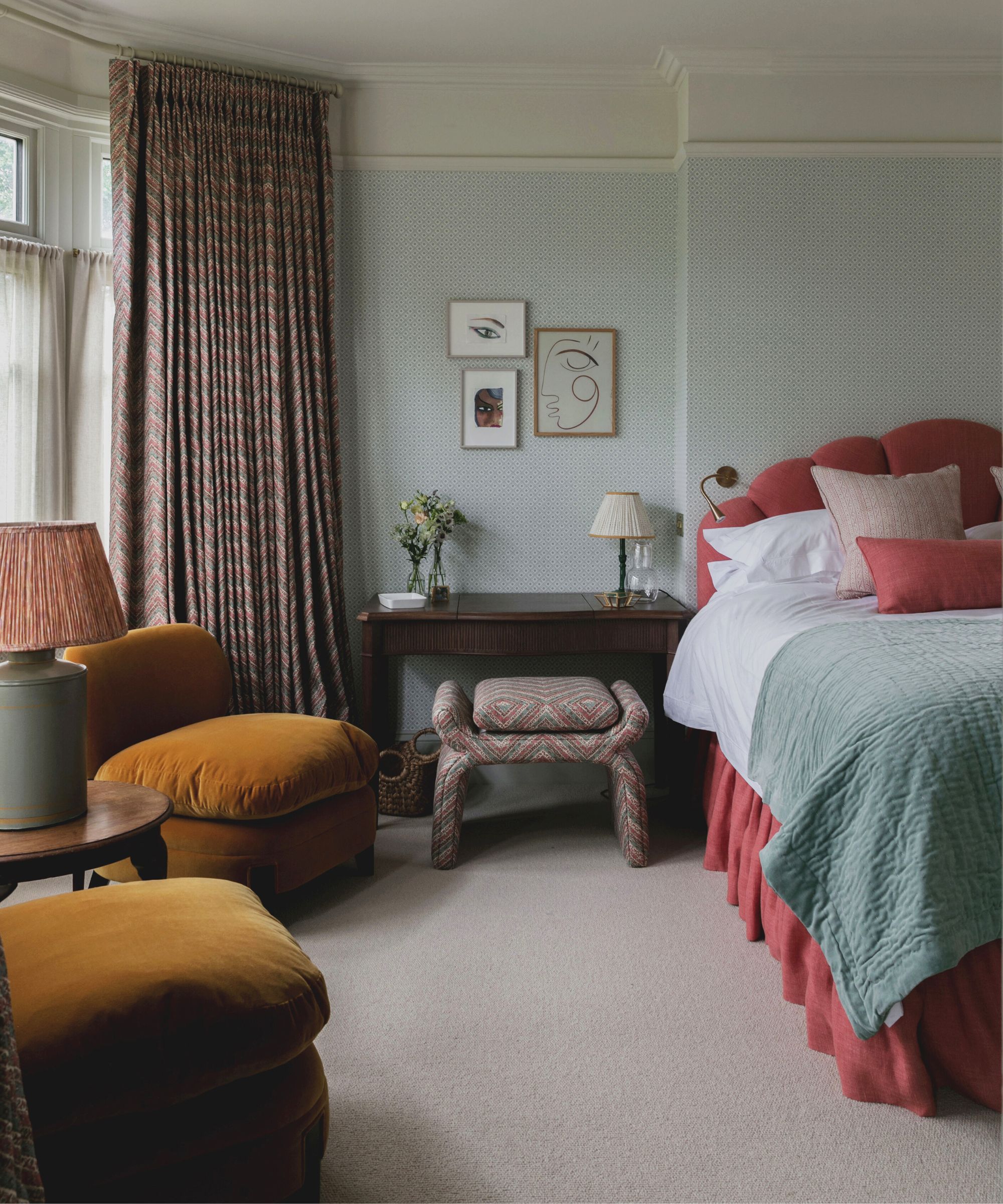
A room that has more than one use can be zoned, too, and it’s well worth doing, according to designers.
‘Creating zones in any room is a game-changer,’ says Hope. ‘Not only does it make your home more usable, but it can also make it feel like you’re gaining extra square footage. A comfortable chair and bar cart in the bedroom provides the perfect spot for a nightcap at the end of the day, while a small settee and table at the foot of a bed can become the ideal space for morning coffee. A stair landing can be transformed into a cozy play or study area. It’s all about maximizing every inch of your space.’
Zoning can make a room a richer space as well as making it suitable for different activities. ‘Within a single room, zoning creates a sense of variety and maximizes function,’ says Lorraine Enwright, founder of Intuitive Dwellings.
‘For example, in a bedroom, you can create smaller zones with differing functions and feelings. In addition to the bed area, you can create a small reading nook at a window seat that is relaxing versus a desk area that might be more task-oriented. All the individual zones work together to create a complete and comfortable personalized space.’ Consider a reading area for a guest bedroom, for example, so visitors can take some time out as they need to, or work from home in a bedroom office.
Design elements that zone spaces
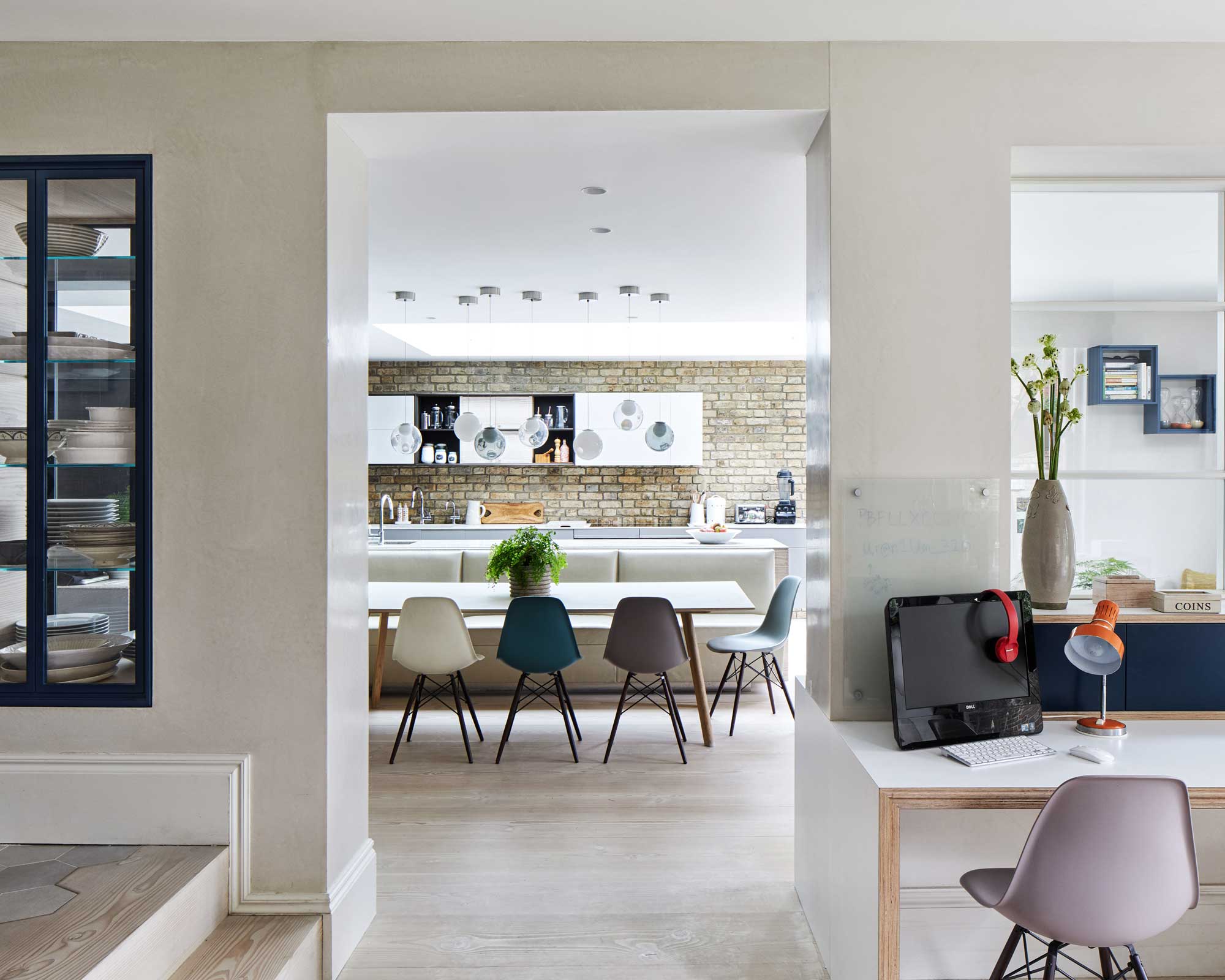
Different aspects of interior design contribute to zoning spaces. ‘Furnishings, lighting, ceiling design, color and pattern are all elements that can be used in a flowing yet unique way to define individual spaces within a whole,’ explains Lorraine Enwright.
And Artem Kropovinsky identifies how the different elements might be employed:
Color and texture: Differentiate areas while considering mood and space perception.
Lighting: Use varied lighting types to set tones for each zone.
Furniture placement: Arrange furniture to define boundaries, balancing openness with privacy.
Rugs and flooring: Mark transitions without physical barriers, ensuring cohesive design.
Architectural elements: Subtly define spaces with half-walls or columns, blending functionality and aesthetics
Lorraine suggests: ‘Create verticality at the center of each space to accent it and create warmth and intrigue. Changes in form, scale, color, pattern and ceiling heights provide both the visual and emotional variation needed for spaces to feel connected yet unique. Layer lighting to offer a combination of task, ambient, and accent lighting, to increase the welcoming feeling of the spaces.’
How to zone an open-concept layout
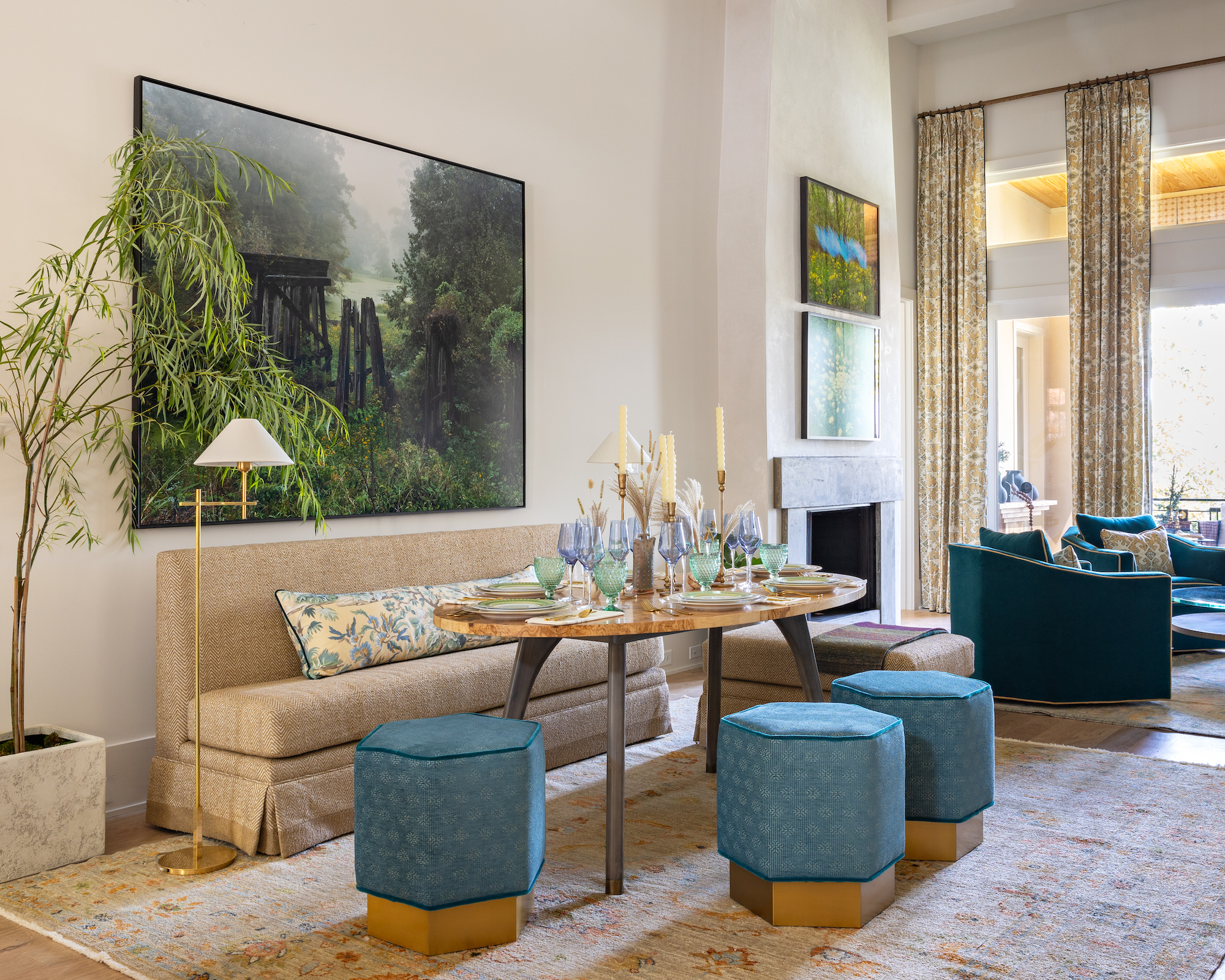
The golden rule of zoning an open-concept layout? ‘Focus on harmonious coexistence of activities, maintaining a natural flow,’ says Artem Kropovinsky.
It’s important to define the space with style and functionality, according to Hope Austin. ‘Room dividers create intimate areas within your open layout, while clever storage solutions keep clutter at bay,’ she says. ‘Illuminate each zone with unique lighting fixtures, and anchor them with beautiful rugs for added warmth and comfort.’
Lorraine Enwright advises: ‘Create a sense of scale and comfort in a large area by using changes in ceiling height/design, lighting that gives focus and warmth to a social area and decorative features and furnishings that create mini zones within a whole.’
How to zone an eat-in kitchen within a living area
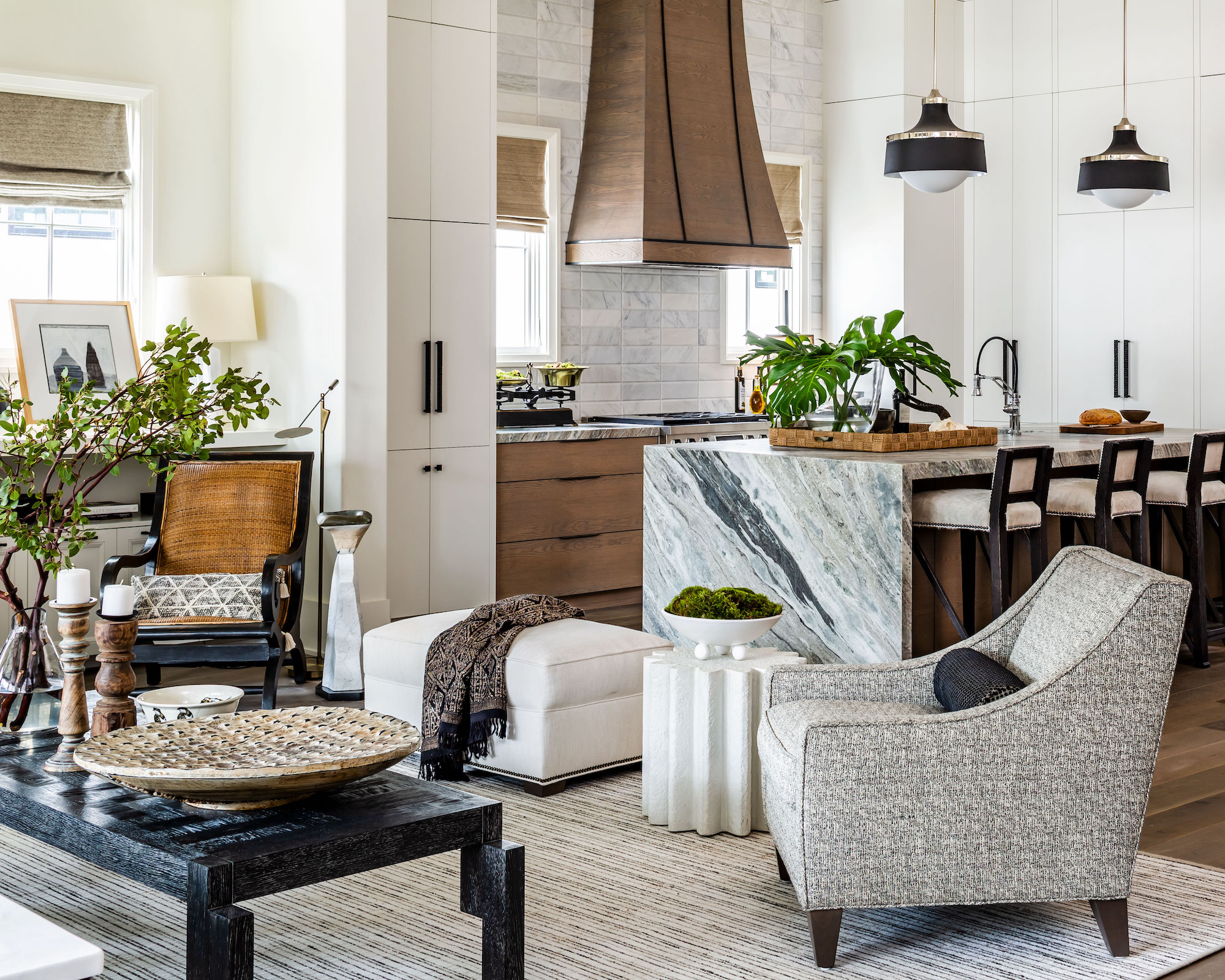
It’s important not to compromise the views and openness of a floor plan in which the kitchen is open to the living area.
‘Separating some of the hard working features of a kitchen into a separate scullery area gives the focal kitchen/island area a prep kitchen character with a social personality, while the workhorse part of the kitchen remains more hidden from view,’ says Lorraine Enwright. ‘Unique lighting and warm tones at the island create drama and focus on the center of the space, encouraging entertainment and a social feeling.’
How to zone an eat-in kitchen within a living area
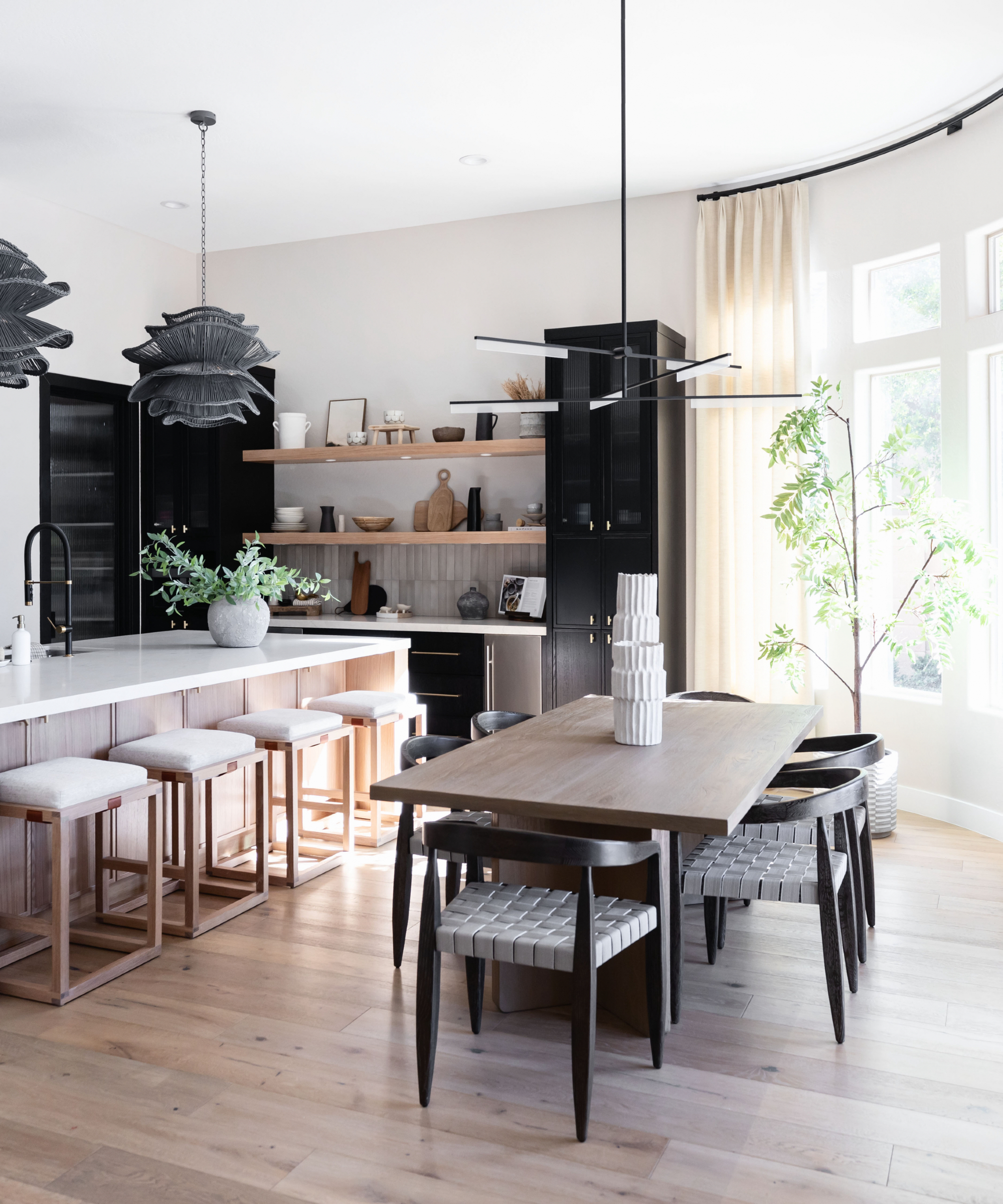
If yours is an eat-in kitchen, effective zoning is crucial. ‘Define the dining area with a stylish rug under the table, complemented by pendant lights for ambiance,’ advises Hope Austin. ‘Use a kitchen island to subtly separate the cooking and eating zones. Incorporate cozy seating and personalized decor to make your dining area feel like a destination within your kitchen.’
How to zone a living room with home office
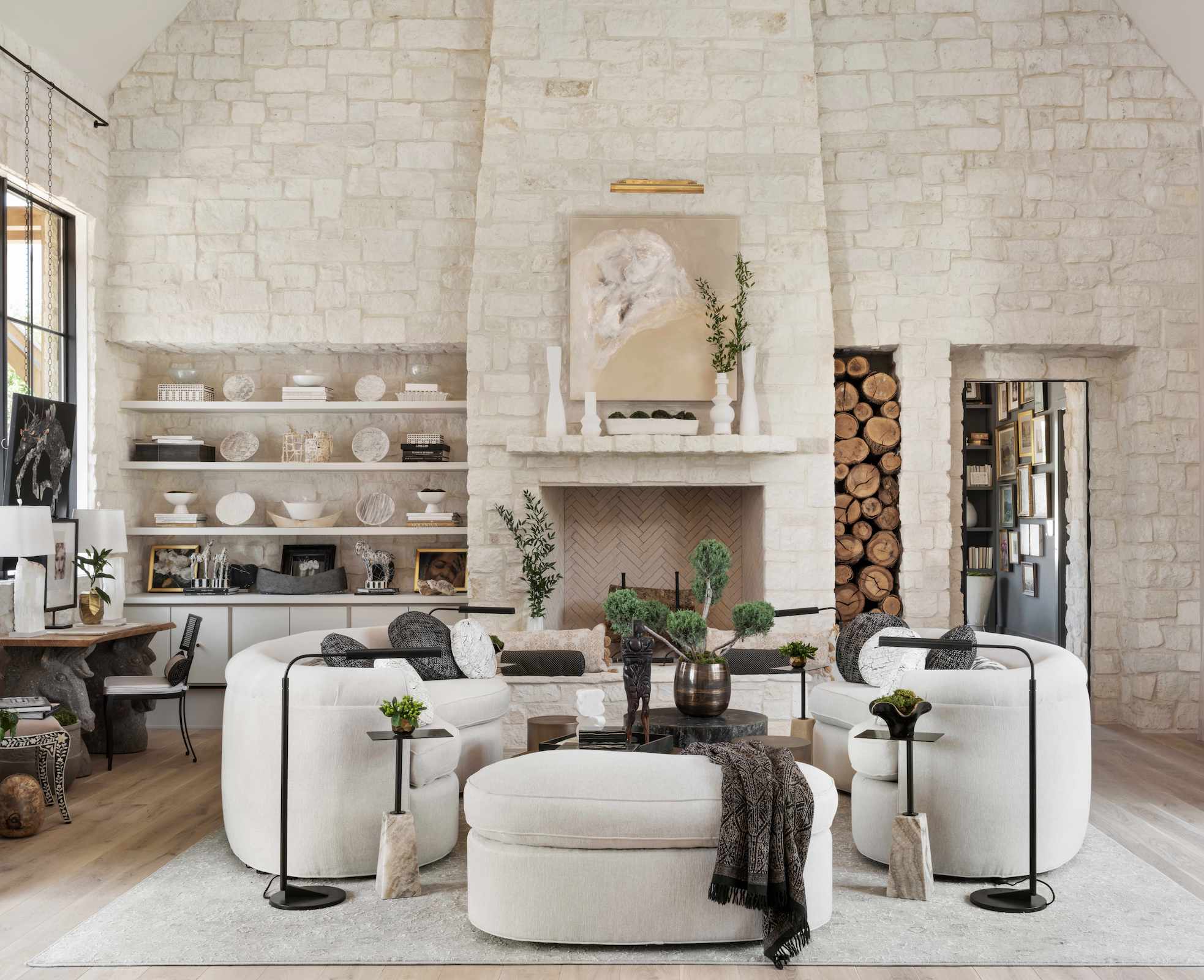
Incorporating a work area doesn’t have to mean compromising style and comfort in the living room.
‘Use vertical design elements at the center of each zone that catch your attention and define the space with light, color and scale,’ advises Lorraine Enwright. ‘Lighting at the center of the space creates ambiance and a sense of place. In this room (shown above), we used collected elements and lighting to draw you into the comfortable corner of this expansive living room to create an office experience.’
Choose furniture carefully. ‘Incorporate a desk that doubles as a beautiful piece of furniture, seamlessly blending work and leisure,’ says Hope Austin. ‘Opt for elegant and easily accessible living room storage solutions to quickly hide work items and maintain a tidy space. Built-in cabinets flanking a fireplace are a perfect example, with one side concealing office items and the other transforming into a stylish bar.’
How to zone a living room with dining area
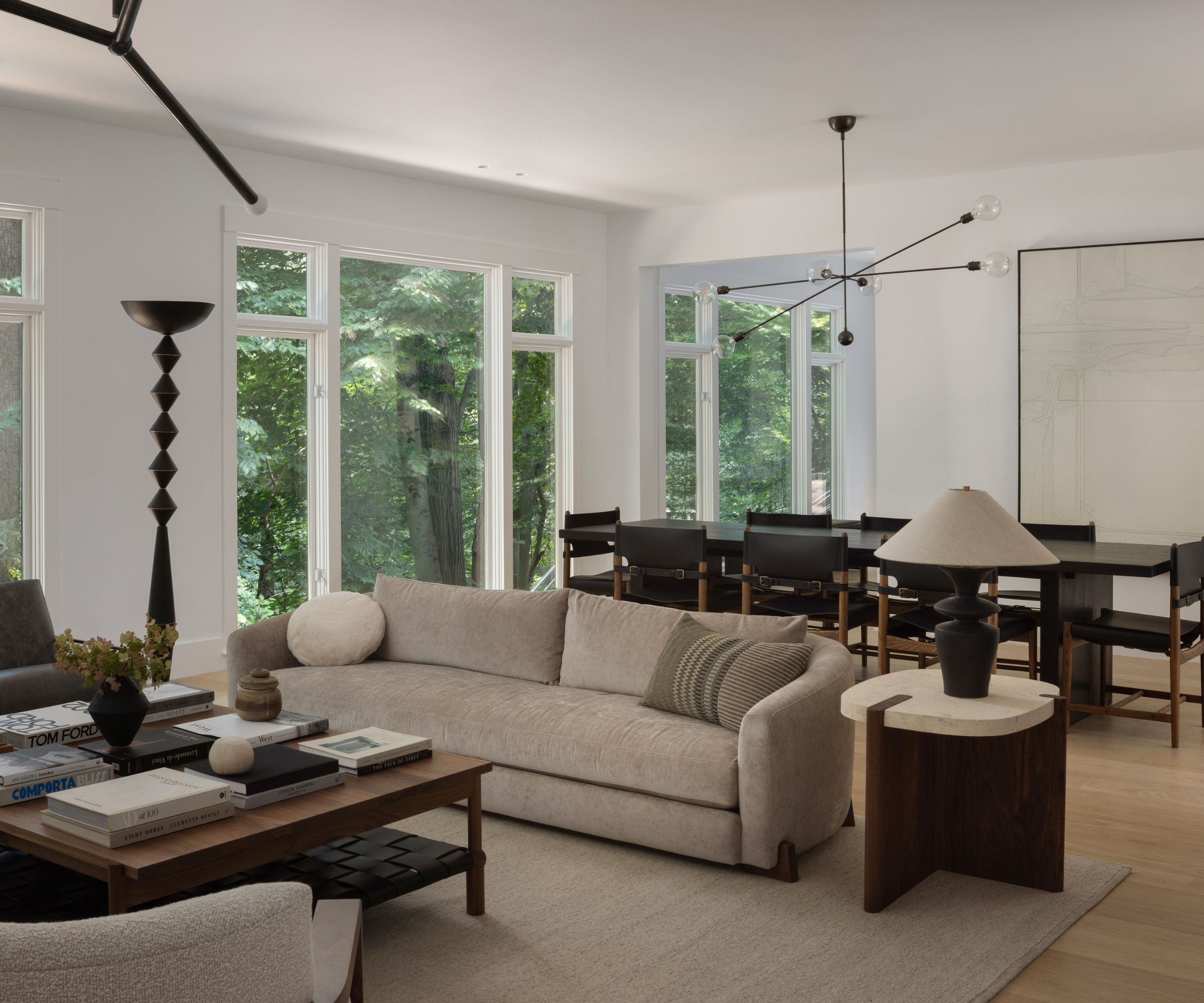
When the living room includes a dining room, it’s possible to maintain an open feel and make it a space fit for entertaining.
‘A double-sided fireplace serves as a stunning focal point, creating visual separation while maintaining an open feel,’ says Hope Austin. ‘Opt for high-performance fabrics that can withstand everyday use and occasional spills, ensuring both style and durability. Incorporate flexible overflow seating, such as stools or benches, to accommodate guests seamlessly. Use a console that doubles as a buffet for easy transition from hors d’oeuvres in the living room to dinner in the dining area.’
Focus on the ambiance of the different zones, too, advises Lorraine Enwright. ‘Scale change from more upright dining chairs, perhaps emphasized with a taller back or color variation, can provide an introverted social experience for the dining zone, versus the lounging scale of furnishings in a living room zone. Layer lighting to offer task, ambient, and accent lighting, to increase the welcoming feeling of the spaces.’
Zoning keeps spaces open while creating functional and individual areas within them so be sure to follow the rules for organizing open-plan spaces to avoid clutter compromising style. Think ways to conceal clutter in the bedroom, too, to avoid its intruding on the different zones of the space.







